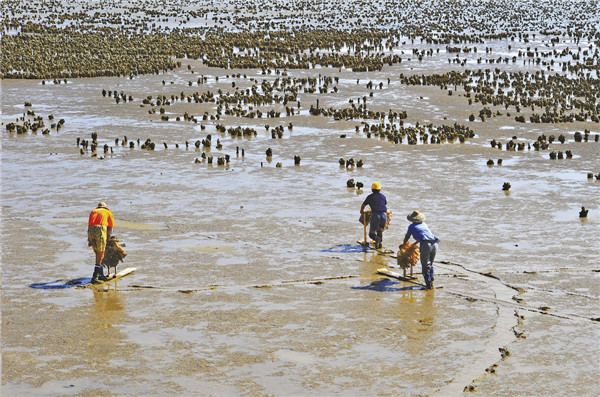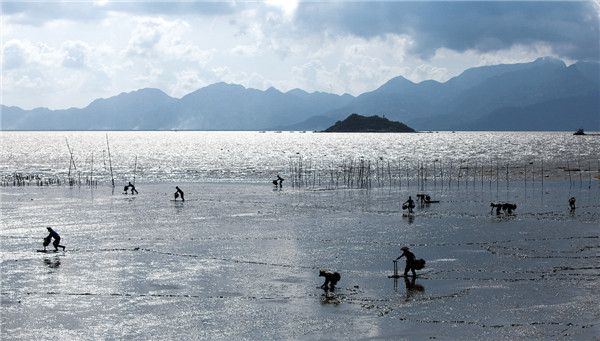Catching Mudfish
Qianwu Town inhabitants of Doumen District have practiced the now deep-rooted folk custom of Catching Mudfish since 1765, the 30th year of the reign of Emperor Chien-lung (Qianlong) in the Qing Dynasty (1644-1912).
Hushan villager Huang Yuanheng, his son Huang Zichang, and clansmen invented the unique fishing method and shared it with kinfolk living nearby. Catching Mudfish then developed into a significant means of making a living and also boosted the fishery trade.

Mudfish are smooth skinned and often crawl in the shallows only to appear now and then in mud holes, making them difficult to catch with bare hands. Distinct mudfish fishing tools, such as a wooden board, mudfish cage, oyster-shaped fishing net, and fish basket were specially developed.
Catching Mudfish is rather seasonal though, and even the times for weaving the fish cage, selecting a site, placing the cage, and gathering it in rely on expertise. It is often conducted when the average daytime temperature reaches around 25 degrees Celsius (77F).

[Photo by Luo Maixiao]
The best time is during low tide on the first day and after the 15th of each lunar month. At this occurrence, bare-footed men with rolled-up trousers from various Qianwu villages line up and trod in the mud, catching mudfish with the specialized tools in hand. On the sideline, groups leisurely weave fish cages and baskets.
The folk custom is popular in Hushan, Lishan, Mashan, Wangshan, Dahaihuan, and Shigou villages in Qianwu Town, but is also widely distributed throughout Zhuhai, Zhongshan, Xinhui, Taishan, and other Pearl River Delta areas. It was designated a State-Level Intangible Cultural Heritage in May 2010.

[Photo by Wen Jianming]







